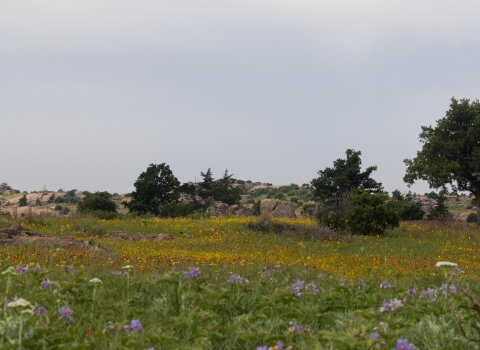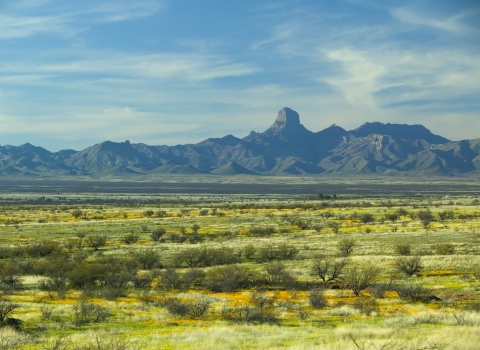A tiny, orange-brown butterfly cautiously makes its way from the tip of a medical swab to the bloom of a purple coneflower swaying in the prairie breeze. The small step for this butterfly represents a giant leap for its kind: It’s among a number of imperiled Dakota skippers raised at the Minnesota Zoo and released back to their native prairie habitat over the last few years. The Minnesota Zoo is just one of the many partners that we at the U.S. Fish and Wildlife Service are working with to recover the Dakota skipper, and the species’ recovery plan will guide these efforts to ensure the butterfly’s recovery.
Dakota skippers once ranged from northeast Illinois to southern Saskatchewan, inhabiting the unbroken, vast grasslands of the north-central United States and south-central Canada. Today they are found only in small, scattered sites in Minnesota, the Dakotas and southern Canada.
“The plight of the Dakota skipper and other prairie species mirrors the threat to native prairies across the midwest,” said Lori Nordstrom, assistant regional director for the Service’s Great Lakes Region. “Turning our attention to restoring and maintaining prairie habitats brings hope to an entire suite of species dependent on that habitat, including the Dakota skipper and other pollinators.”
We listed the Dakota skipper as threatened under the Endangered Species Act in 2014. The species experienced a decline coinciding with the conversion and degradation of its prairie habitat. Dakota skippers may survive in areas where lands have some grazing or haying, and in fact, they are dependent on habitat that experiences periodic disturbance; however, Dakota skippers disappear when these disturbances become too intense.
The goal of the Dakota skipper recovery plan is to work with partners to stop the species’ decline and ensure its long-term survival. Recovery actions for the Dakota skipper focus on reducing threats to existing populations, such as conserving and enhancing prairie habitat by working with many different stakeholders, including private landowners. The plan also outlines measures to enhance existing populations and establish new ones through captive propagation, such as through the Minnesota Zoo’s Prairie Butterfly Conservation Program.
Recovery planning is one step in a process to address threats to endangered and threatened species. Plans provide a road map for private, tribal, federal and state cooperation in conserving listed species and their ecosystems. While a recovery plan provides guidance on how best to help listed species achieve recovery, it is not a regulatory document. Once a recovery plan is finalized, recovery partners outline specific activities in a Recovery Implementation Strategy.
Learn more about the Dakota skipper and efforts to save the species.



